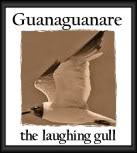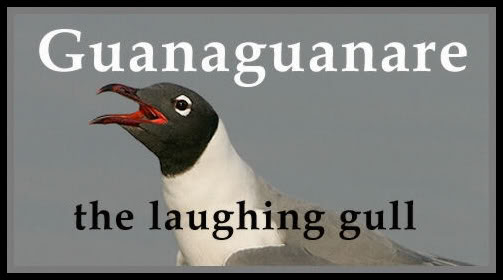Excerpts: 1 | 2 | 3 | 4 | 5 | 6 | 7 | 8
TITLE
A Sketch of Trinidad: The Canadian Mission and the opening of Presbyterian College in San Fernando, Trinidad by Alice Clark. Ottawa: Hope and Company, Stationers and Printers, 1892.
Previous
COUVA.
Off to Couva in the train; rolling over the
Couva river we cross one of the longest iron bridges in the island. Mr. Levie kindly met us at the station and drove us to the Rev. A. M. Thompson’s Manse. We received a kind christian welcome from the very energetic missionary, Miss Fisher the lady teacher, and Mrs. Tomkins the pleasant house keeper. Couva is one of the finest agricultural sections for the production of sugar and cacao. The chief manager of Brechin Castle estate, Mr. Arbuckle sent his carriage and groom for us, to drive to the Usine, and we spent a
Page 47
delightful day closely inspecting the manufacture of sugar from the cane. These were the first Vacuum Pan works erected in Trinidad, and the fine crystals made here, took the first prize at the local exhibition in 1886. We inspected the preparation in making the Cocoanut oil, they told us that 1000 cocoanuts produced 14 gallons of oil— the fibre is chiefly applied in making mats and brushes. We had handed to us some specimens of native wood, as the leopard, poui and cedar, and spent a very agreeable hour or two in their lovely home on Brechin Castle estate. The school in Couva, taught by Miss Fisher and her assistants, is held in the old Manse formerly the home of the Rev. T. Christie and family. As we entered all the schools, we were pleased to notice, the respect of the East Indian children, they all arose and made their salute, and said salaam. Good progress is made by the children here, George Jagganath, one of the teachers, recently a heathen but now a christian of high caste and well educated in Hindustani, teaches the Hindi in school. It is very difficult to keep the heathen girls in school long enough to learn to read, the parents say “they know enough for girls”. The custom of India, is that the girls are practically sold by their fathers, while yet children, to men generally much older than themselves. After the service on Sabbath we spoke to a number of the Hindi people, were pleased to hear the history of some, for example Chumala, a Hindi woman whose Husband left her years ago, makes her living hoeing in the fields, at not more than 25cts. a day, but is always at her place in the house of God, with her weekly offering of 6cts. for the support of the
Page 48
Mission. Another remarkable woman, when indentured on the estate, began to read Hindi, had no help from teachers, except from her fellow workers, she made good progress and began to read and study the Bible, and now knows it well in all its subjects, she is now the wife of one of the catechists, and will doubtless be a great acquisition in teaching the Bible. We were surprised at the efforts of two little heathen boys, attending the school, who have to support a mother, brothers and sisters, they are very anxious to learn but have to work in the fields to get bread; they go to work very early in the morning, and do a part of the days task then come to school for three hours and go back and finish the task. They are bright intelligent boys. Rather more than six miles distance from the railway station, we are in the land of the Cacao. It is hardly possible to have a sight more glorious than the ridge of the Montserrat hills when during the months of February and March the slopes are covered with the gorgeous mass of scarlet blossoms of the “bois immortel.” The Roman Catholic Church, a commodious cedar building contains rather a novelty, a black image of the Virgin Mother. I believe at Montserrat in Spain, the church has a similar image. The view from the top of a high hill was a superb one taking in one grand sweep, Caroni, Couva, the town and peak of San Fernando, the gulf with its shipping, the Bocas, and the lofty Tucutche 3,000 feet high making in all a vast panorama. Time would not give us more than a few days at Couva, after bidding adieu to our kind friends we took the train again for our old home in San Fernando.
Page 49
LA BREA.
So called from a Spanish word meaning “pitch.” Under the guidance of Mr. Grant, we set off one morning, at 7 o’clock, to visit the Pitch Lake of La Brea; one of the wonders of the world! and about 20 miles distant—-Having secured a fine large mule and buggy, we were on our way, passing through a cultivated country, we met numbers of Mr. Grant’s people on the road, all wishing us salaam, “peace be unto you “—One would stop and have a question to ask, another some grievance to tell about—When in sight of a cabin, the little children ran in to tell their mother that the Sahib was coming; the mother with her sick child was at the door waiting for advice and medicine, the required mixture was handed to her, and after inquiring for the aged and infirm, we drove on to the Rusilac school.—The children were reading the scripture lesson when we went in, they sang in Hindi some of our familiar hymns, after a few words to encourage them to go forward in their lessons and giving them God’s blessing we resume our journey.—The Missionary has plenty of hard ministerial work in his lot employing all his time but he has the satisfaction of seeing his work greatly appreciated. After driving quickly past the swampy malarial district called the Oropouche Lagoon, we come to tropical scenery again, rice fields mango trees and pine apple plantations. --Now we are close to the sea, away south, along the western coast, we have the Village in sight, before us are a large number of men daily employed shipping pitch. We may consider ourselves very fortunate tourists, inasmuch as Mr. McCarthy,
Page 50
manager of the works, is an old friend of Mr. Clark’s, from Shelburne, Nova Scotia. By appointment he was ready to receive us at breakfast in his own home, after which he took us through the workshops and boiling houses for the preparation of epuré, and led us to the stables where more than 100 mules are kept for drawing out the carts of pitch from the lake to the shore. We watched the strong able negroes carrying large baskets of this valuable article on their heads, through the surf to load the lighters for the ships and steamers in the offing. Mr. McCarthyhy kindly placed at our service his own carriage, himself proceeding on a fine pony. The first half mile was a delightful drive over the smooth sand beach, to the lower landing, where a jetty is getting built to load the barges. Turning towards the Lake, not very far inland, we proceeded by the new road prepared by the Company, bordered by the cashew trees, and great variety of other trees that affords the passerby a refreshing shade from the scorching rays of the mid-day sun. Fortunately for us the day was not so hot, and the sky was overcast. Ascending a small incline, when suddenly you behold the Lake in all its strange beauty. This natural wonder occupies a surface of about one hundred acres 138 feet above the sea level, and estimated to contain 4,500.000 tons of asphalt. The New York Asphalt Paving Company gives £30,000 sterling a year to the government, for the use of their claims from which they took 80,000 tons of pitch in the year 1891. A surprising thing is the rapidity with which holes in the Lake are filled; if a few tons of asphalt are dug from any one place, twenty-four hours later the spot is again level with the other
Page 51
parts. Several attempts have been recently made to ascertain its precise depth but all ineffectual. The pitch becomes hard after being exposed on the surface for some time. It is dotted by small patches of mangroves forming tiny islets. These islets are the haunts of a small species of alligators that may be seen basking in the sun. In places here and there are fissures of clear water, narrow and shallow. In the centre of the Lake the pitch becomes softer, and there is a strong scent of sulphuric acid, with hissing and fuzzing out of salt, sulphurous water of different colours. As we come nearer the “Source” we find ourselves almost imperceptibly sinking, we come as near as we dare, to this boiling pot, it is curious that none of it adheres to the boot, or on our fingers as we handle it. Having secured a specimen of it, we retrace our steps for terra firma. Many large towns and cities, both in Europe and America have streets paved with asphalt from this district. Leaving this source of wealth, we take the road leading to a large Cocoanut plantation of 9000 palms. On the road homeward tall palms are on each side of us, for which this district is noted the Morichal palm being the loftiest. Night was upon us, our good mule was not so anxious to return as we were, he jogged on his own pace, took little heed of all our persuasive powers, of scolding and coaxing, stood still and moved on, just as he felt like it, he little cared for the laws of San Fernando that we would be fined if we entered the town after dark without lights. Arriving at a certain point, we saw a light approaching, it was faithful BhupSingh on the horse with a lantern coming to look for us, so we arrived home in safety, after a
Page 52
thoroughly enjoyable day. This is really a land of wonders! It has lakes of pitch; oysters growing on trees, as we saw them, attached to the roots and branches of the mangrove trees, growing near the shore; crabs that mount on trees to obtain their living, as the soldier crab; fish that give music, by blowing their own trumpet, as is the fact with the trumpet fish; and another fish clad in a coat of mail, called the cascadou.
Previous<--->Next: OPENING OF TWO CHURCHES
Excerpts: 1 | 2 | 3 | 4 | 5 | 6 | 7 | 8
A Sketch Of Trinidad - Excerpt 7
Subscribe to:
Post Comments (Atom)












0 comments:
Post a Comment